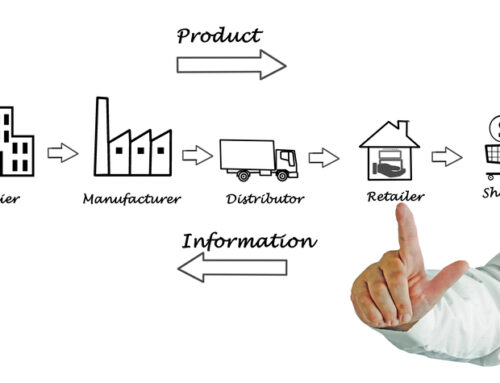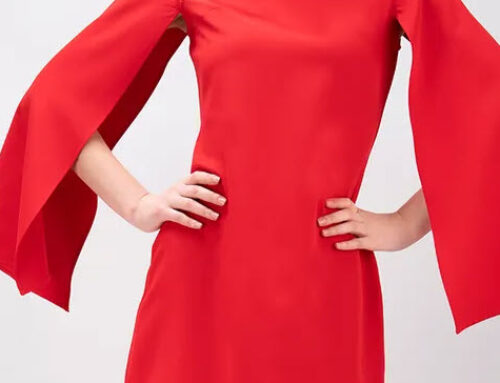When it comes to shopping, we’re all guilty of a few bad habits. Maybe we give in to the occasional sale, or splurge on the handbag that we know will only be trendy this season.
However, there are some shopping habits that can do greater harm to our environment and to our pocketbooks. Here are the ones to consider curbing right away:

Photo by Artificial Photography on Unsplash
“Bracketing” – Bracketing means purchasing a garment in multiples, whether it’s several sizes of the same dress, or three different patterns of the same shirt. A good return policy encourages buyers to shop online, turning their bedroom into their personal fitting room. But instead of returning clothing to the rack, unwanted clothing is shipped back to the retailer to wind up in a landfill or resold at a reduced price. Bracketing sounds like a “victimless” crime, but it raises fulfillment costs and causes damage to the environment by increasing the brand’s carbon footprint and producing excess waste if the seller cannot resell the items.
How to solve the problem: Buying online can be tricky, but you can avoid the bracketing trap by purchasing clothes from brands that you already trust, who have consistent sizing. If you are branching out with your style, read consumer reviews to see how true to size the garments are. Another option is to purchase custom made clothes, which eliminates the guesswork and back and forth shipping, since your purchase is tailored to your measurements.
“Single Wear Purchases” – When it comes to special events like a wedding, single use purchasing is almost unavoidable. Whether it’s a business meeting or a social event, we’ve all been guilty of buying a piece of clothing with the intention of wearing it only once or twice. But fashion lovers also fall for fads – whether it’s the orange handbag that can only match that ONE skirt, or the top that only looks good with a certain skirt. Not only do these purchases add up in cost – it does a number on the environment, too. Then it’s only a matter of time before last year’s funky jumpsuit winds up in the Goodwill pile.
How to solve the problem: While there’s no harm in following the occasional trend, the majority of your closet should not be dictated by the latest Instagram influencer. The core of your wardrobe should be versatile high quality pieces that can be dressed up or down depending on the occasion, covering birthday dinners or board meetings for years to come. Have fun with accessories, which are less costly and require less space.

Photo by Artem Beliaikin on Unsplash
“Sale Binging” – Who doesn’t love a great deal? Even if the color is all wrong or the style is not something we’d ordinarily wear, we still pick it up because it was a bargain. “But it was on sale!” is the reason why closets fill up with garments that we never wear. Much of what we call disposable fashion is bought on a whim because the price was right.
How to solve the problem: Avoid buying on price emotion by planning ahead with your purchases. Watch for sales on specific items that you have need of. Skip the cheap stuff that falls apart after a handful of washes. Pay attention to the labels and look for more durable fabrics like linen, wool, hemp, or even cotton.
“Buying Skinny Clothes” – Imagine that you find the perfect sundress, but when you try it on, it won’t zip up. You buy it anyway, reassuring yourself you’re planning to lose weight anyhow, so you’ll fit into it just in time for your next vacation. That cute outfit is all the incentive you need to do the things you’ve been meaning to – passing on dessert, making lunch instead of dining out, going to the gym before work.
While having a goal in mind can be beneficial when trying to lose weight, one of the biggest problems with this strategy is that it does little to boost your confidence in the moment. Why wait to wear clothing that makes you feel beautiful when those good feelings can give you the extra push you need right now? Furthermore, buying for an idealized size creates a cycle of waste where you are buying for your desired size, instead of what you can actually wear. The reality is, unless you lose more than 15-20 pounds on an average body, you will not dramatically change sizes.
How to solve the problem: Despite the problems with this trend, some women swear by the “buy small” strategy. If you do decide to use fashion as a reward, keep goals realistic and buy only one or two sizes smaller than usual. That way you get the most out of your purchase. The best solution, though, is buying made-to-measure clothing that you love, and expressing to the designer your goals so that the clothing can be adjusted in the future.

Photo by Freestocks
“Shopping Out of Boredom” – We’ve all been guilty of this from time to time. The clearance racks at Target sing our song when it’s 8PM and we’ve had a hard day at work. Or maybe we’re just passing time in a waiting room, browsing social media when a cute t-shirt catches our eye. Impulse buying isn’t going to go away, but we can be aware of what it does to our wallets and to our wardrobe. If you can’t recall buying half of what you own, or your UPS person knows your shoe size, you may want to look closely at your buying habits.
How to solve the problem: If shopping is your stress relief, consider incorporating other means of relaxing such as reading a book or grabbing coffee with a friend. Avoid storing your credit card information online, which can make impulse buys more likely. Finally, if buying clothing makes you feel guilty or leads to financial distress or problems at work or at home, it’s wise to seek help, either with a therapist or a group which specializes in shopping addictions, like Spenders Anonymous.
Fashion is fun, and shopping for clothing can be an enjoyable experience. We wouldn’t be in the business if we did not love it! However, viewing shopping as a hobby or a means of entertainment can lead to overbuying, crowded closets, and wasteful consumerism. Making your purchases more purposeful can make you feel successful and can help you afford the occasional splurge when it’s something you really desire.



